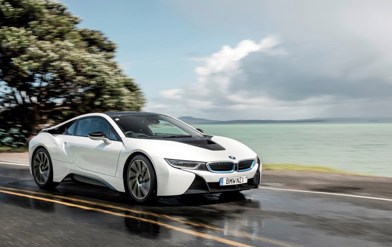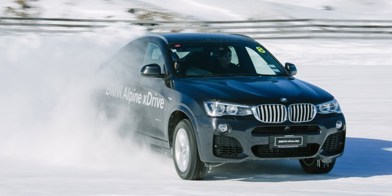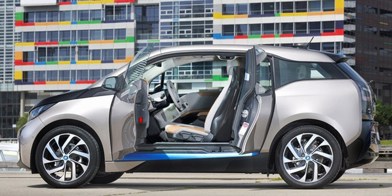If the luck associated with number seven is any indication, this new BMW flagship should win Lotto. As the seventh generation of the leader of the luxury team, the BMW 7 Series was first launched in 1977, and carries with it the legacy of introducing to the brand some technical innovations many of us take for granted in our own cars: things like ABS, Xenon lights, moving sat-nav and Head-Up Display.
At a time where the moving world is migrating to cleaner and greener, these luxury vehicles are also leading the way in renewable and sustainable materials, and electric over petrol; or in this latest G70 BMW 7 Series’ case, either: the 2023 7 Series, launched in Melbourne in late-January, is offered as either the 740i, with a conventional turbocharged petrol six-cylinder engine with mild hybrid and rear-wheel drive, or as the first fully electric 7 Series, the BMW i7 xDrive60 - whose name more resembles a password than a car (just needs the underscore). But there’s a catch, as NZ won’t get the petrol version. So, it’s the new BEV-only BMW i7_xDrive60 that headlines the new 7 Series, locally, with some really distinct and standout features.
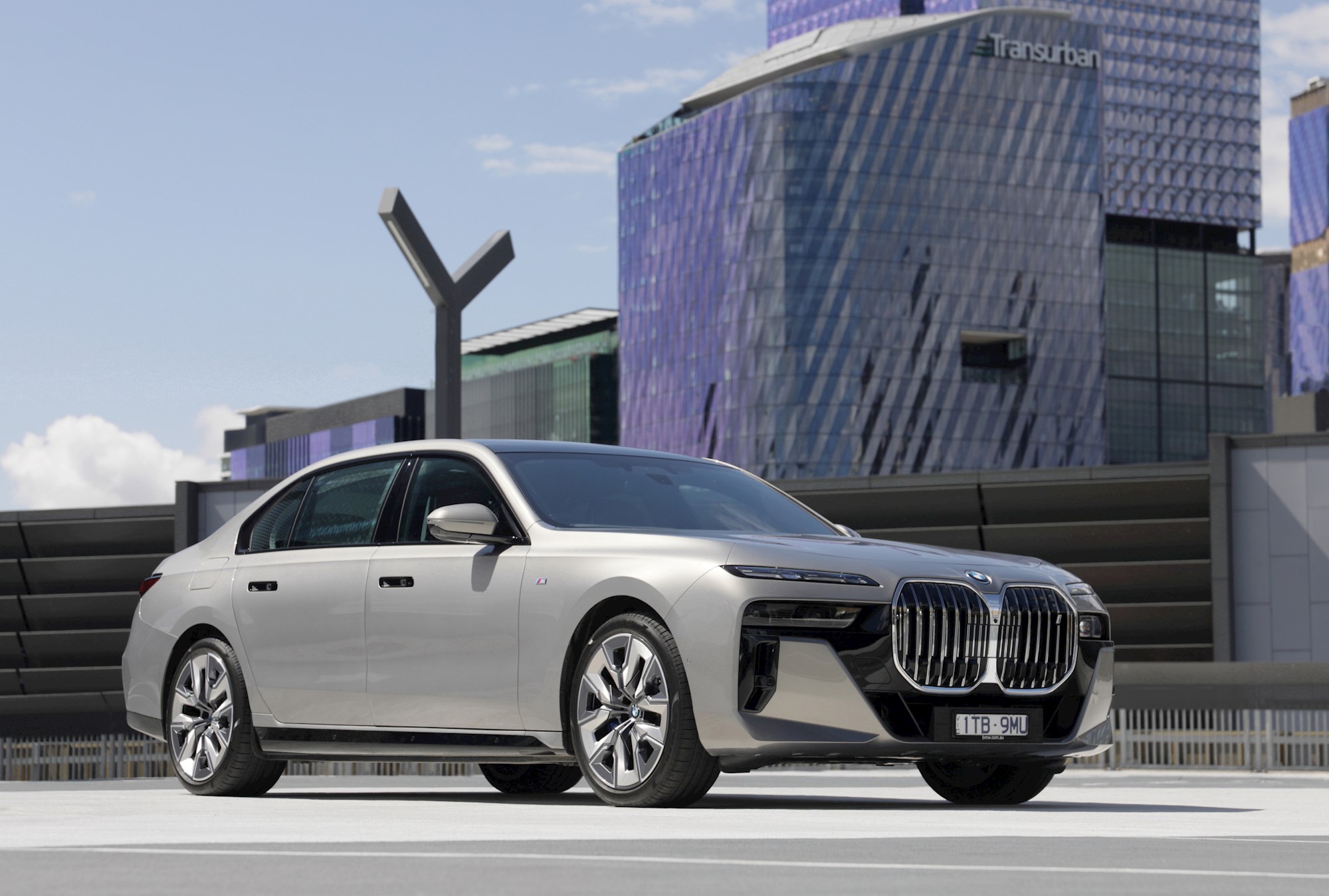
Possibly the most memorable of those is the BMW Theatre Screen, a massive 31.3-inch TV screen that drops from the roof in the rear to offer massive 8k resolution in super-wide 32x9 format, allowing multiple configurations for work or play. Like a Smart TV, it hooks up and into the range of apps and streaming platforms, Netflix, Disney et al, including Amazon Fire TV. If that last one doesn’t ring a bell, it probably shouldn’t, because the asterisk is that NZ can’t access Amazon Fire’s entertainment platform. Yet. But it’s coming.

It does, however, offer an HDMI port to replicate content from a device in the interim; for which there is plenty of accommodation, including a smartphone charging mat in the rear, a pair of pop-out cup-holders from the rear centre console and, different from the previous 7 Series, the ability to stow said centre console, enabling the fifth seat.
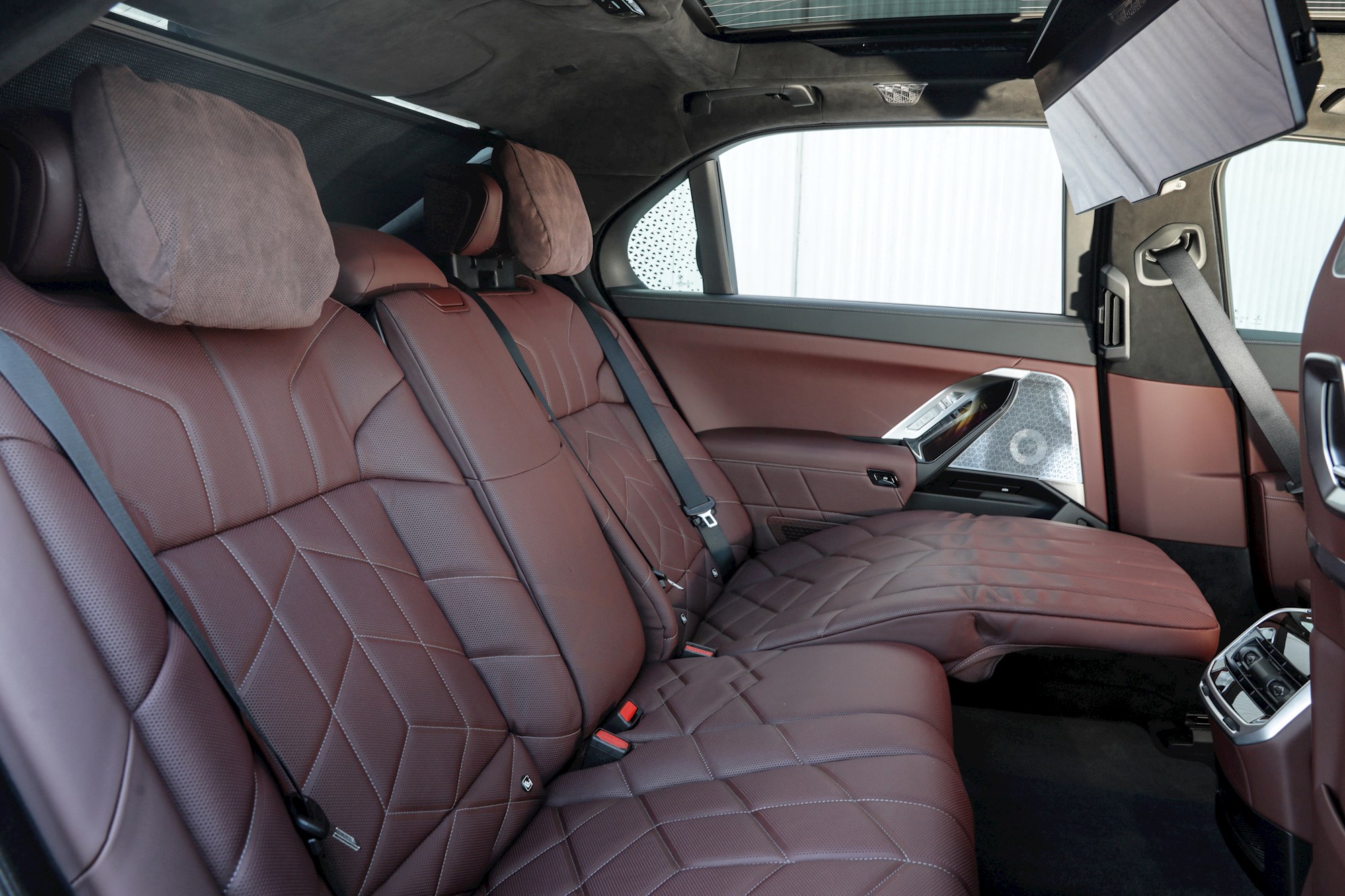
The rear doors also house their own touchpads, for controls of the seat massaging, heating/cooling, sunblinds for the sides and rear window and, of course the big TV, that’s also business-focused, with a rear-facing camera for video conferencing.
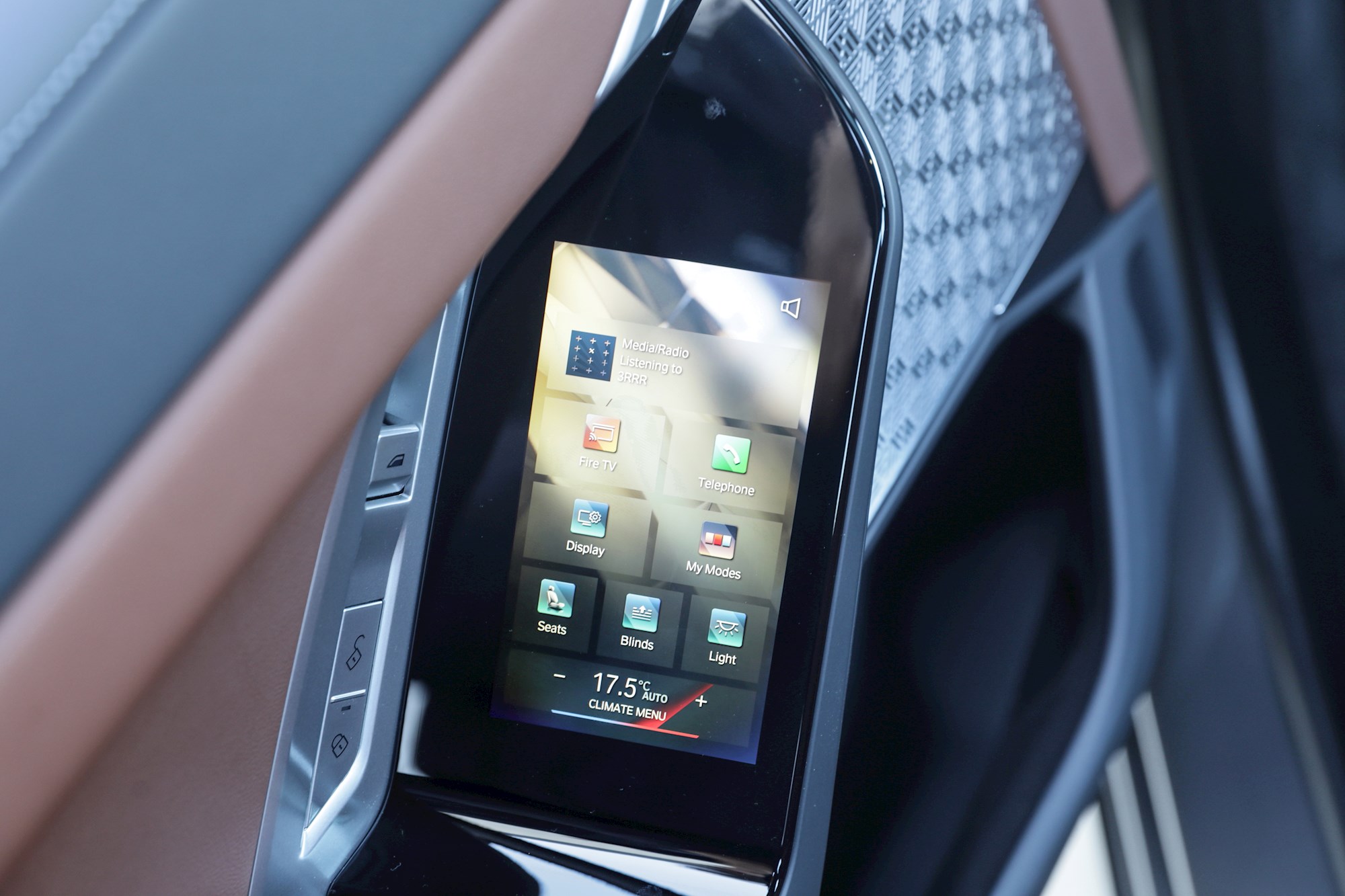
Overall taller in almost every way, the rear seats also sit higher than previous, offering more of an SUV-style ease for ingress/egress, but also comfort, with quasi-stadium seating for rear seat passengers. The rear seats also recline, with calf-support for a Luxe movie/moving experience, and cashmere seat trim as the default, rather than leather, which is a lot more appealing, luxury and comfortable in many ways. Rear leather is an option for those who must.
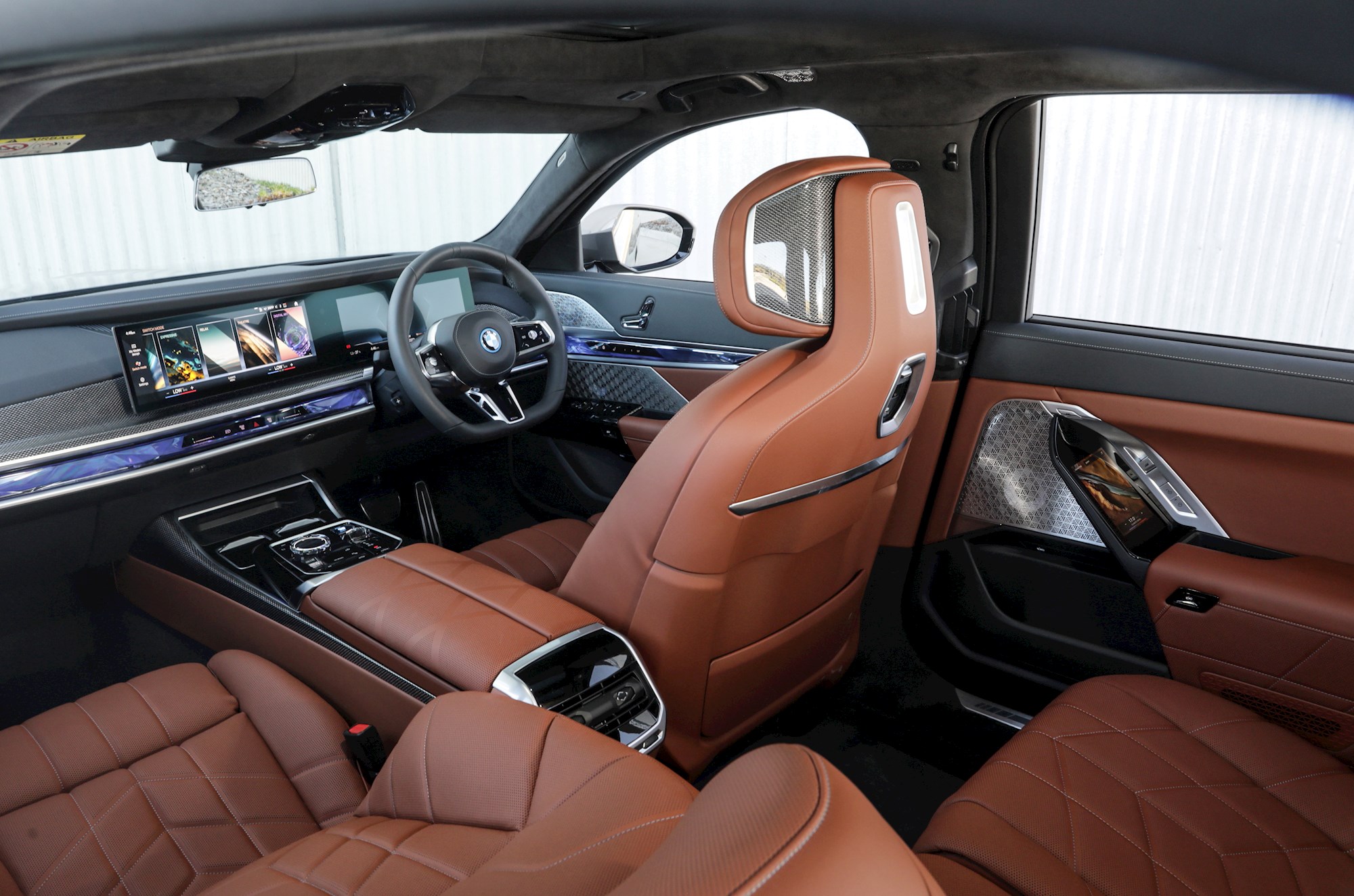
“The best car to drive, the best car to be driven in,” is the catchphrase BMW uses for its 7 Series, and while the focus is rightly so on the rear seat’s accommodation, the fronts are similarly impressive. But not without some theatre, first: the new 7 Series features automatic parking and maneuver assist: the ability to move the car forward and back via, for the first time, a paired smartphone (rather than a keyfob). Like BMW’s of recent, it also features Parking Assistance Professional, the ability to automatically repeat a programmed reversing path, if home has a tricky driveway, for example.
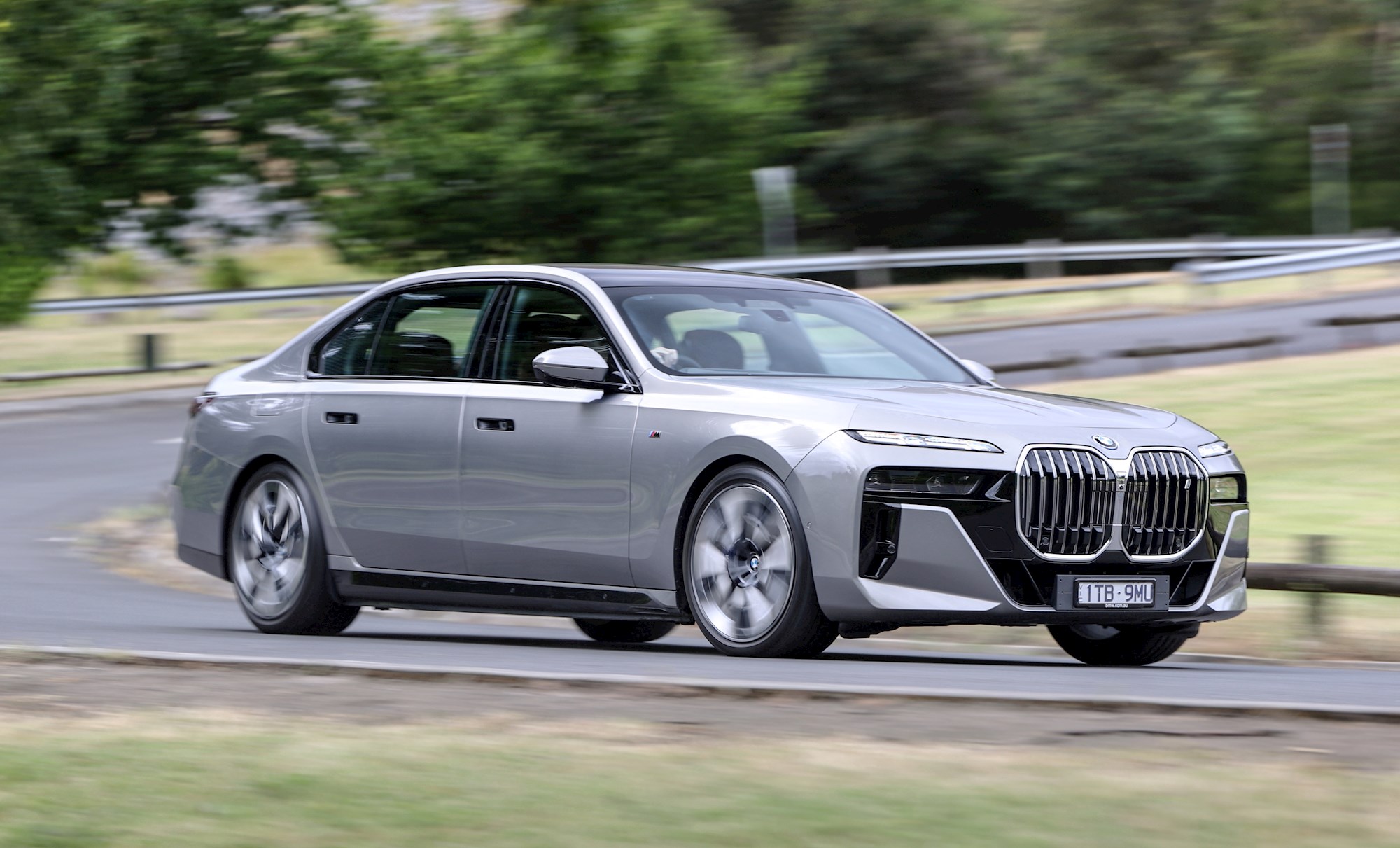
New for this model are electric automatic doors; inspired by Rolls Royce, they can be programmed to open any/all doors. It’s a neat trick, a little slower than manually opening it, but definitely more convenient in certain situations. However, once the driver is in and puts their foot on the brake, the auto-closing feature is a handy trick. And with more than 30 sensors and cameras around the car, the doors have plenty of protection to avoid opening into other cars, people of even looming cyclists.
There’s also an external light show, with the large illuminated kidney grille, while the slimline headlights offer a little razzle and dazzle from Swarovski crystals that sparkle and shine with the two-piece DRLs, with the high/low beam units below.
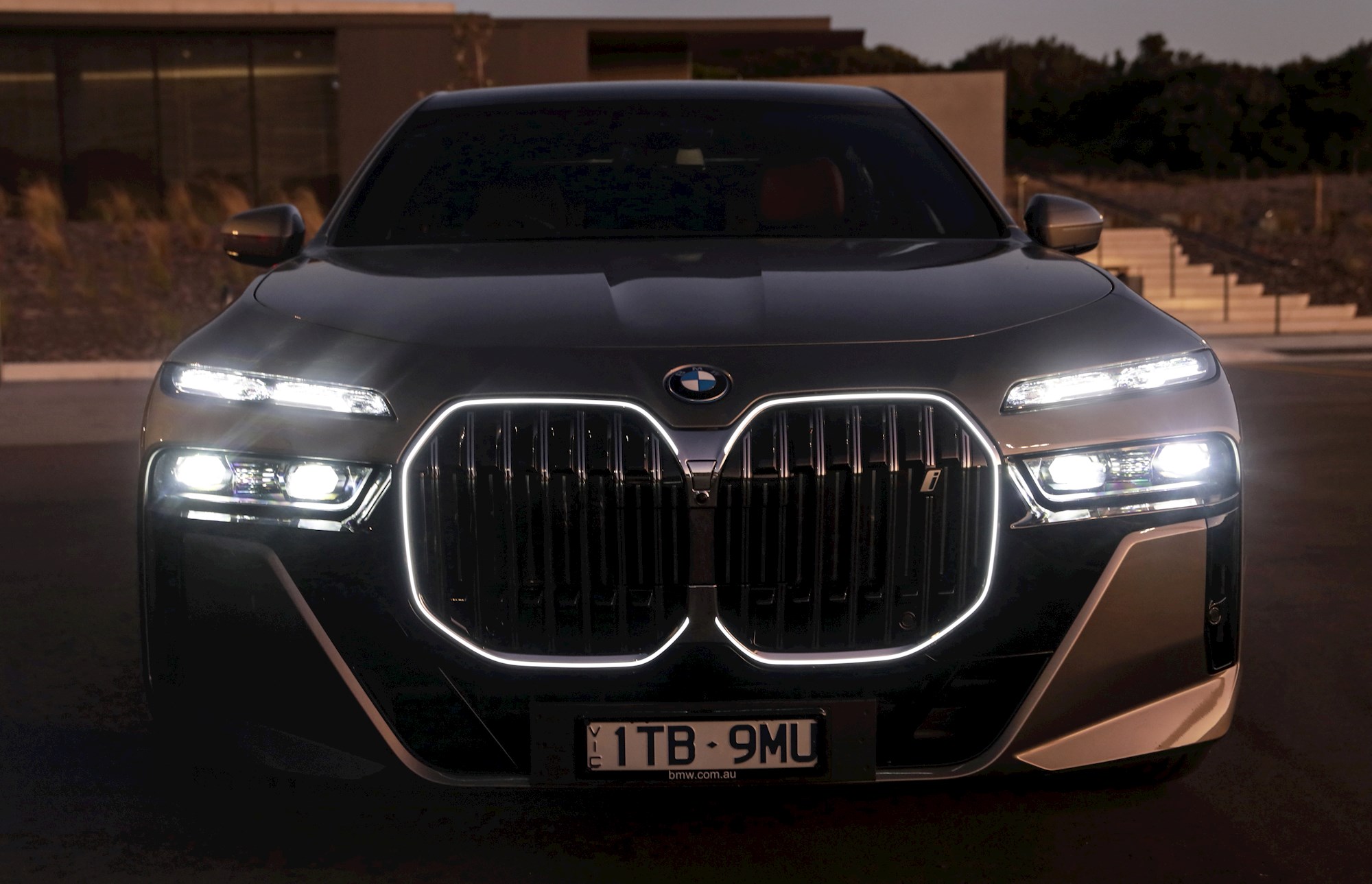
The front seats also have Swarovski crystal styling and finishes everywhere, including the strip across the dash with haptic buttons that BMW calls the Interaction Bar with Shy Tech, a design-aesthetic that semi-hides the controls, such as seat settings and door locks with touch settings. Crystal cues also extends to the iDrive control, gear selector and electric seat buttons on the doors, offering a real feel and quality and class, without being too overt or obtuse.
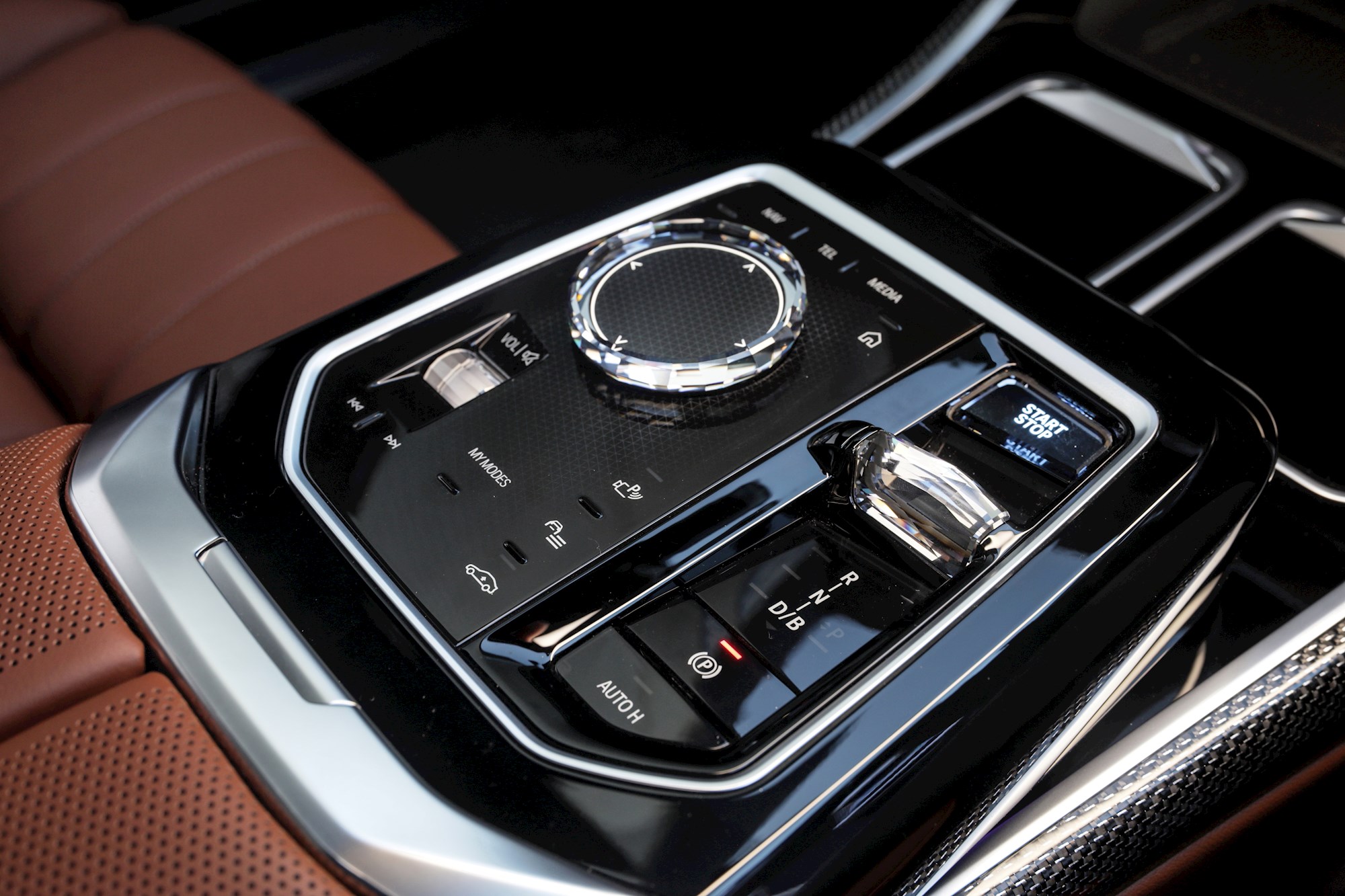
All these features can be a bit overwhelming initially, especially on our relatively short drive from Melbourne CBD to Yarra Glen area, a 200km round trip, sampling both models from the driver’s and rear seats. With a little BMW familiarity of functionality, we’re soon on our way in the i7, its wallop of electric power on tap. It’s not the smoothest from 0-20 percent throttle in Sport mode, when a little eager with the throttle, but that’s the nature of EVs, so we selected Comfort: just as quick, a fraction smoother. While 400kW/745Nm sounds a lot, tamp that down with 2.64 tonne, and the i7 becomes a luxury cruiser with ‘more than ample’ power, to quote the Rolls Royce mantra.
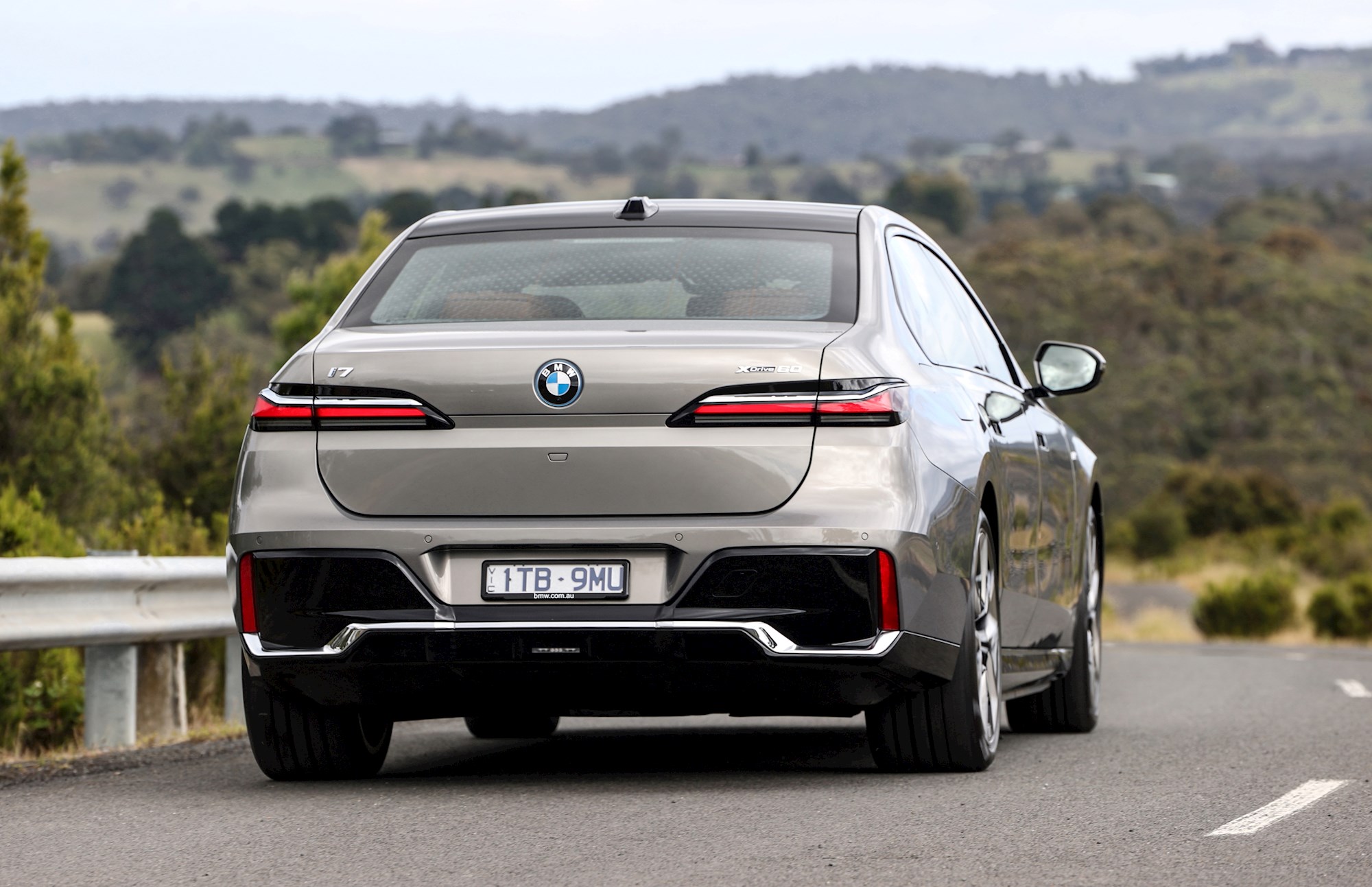
The Hans Zimmer soundtrack is also subtle but audible, and offers a few options for sounds of the EV ‘engine’. The audio is equally brilliant, a Bowers & Wilkins 35 speaker system, and features 4D sound, with shakers in the seats to replicate and reinforce vibration.
A new curved, widescreen display with a big 14.9in infotainment and 12.3in instrument cluster works with voice, touch or iDrive control, while augmented reality navigation (introduced in iX) adds to the navigation.
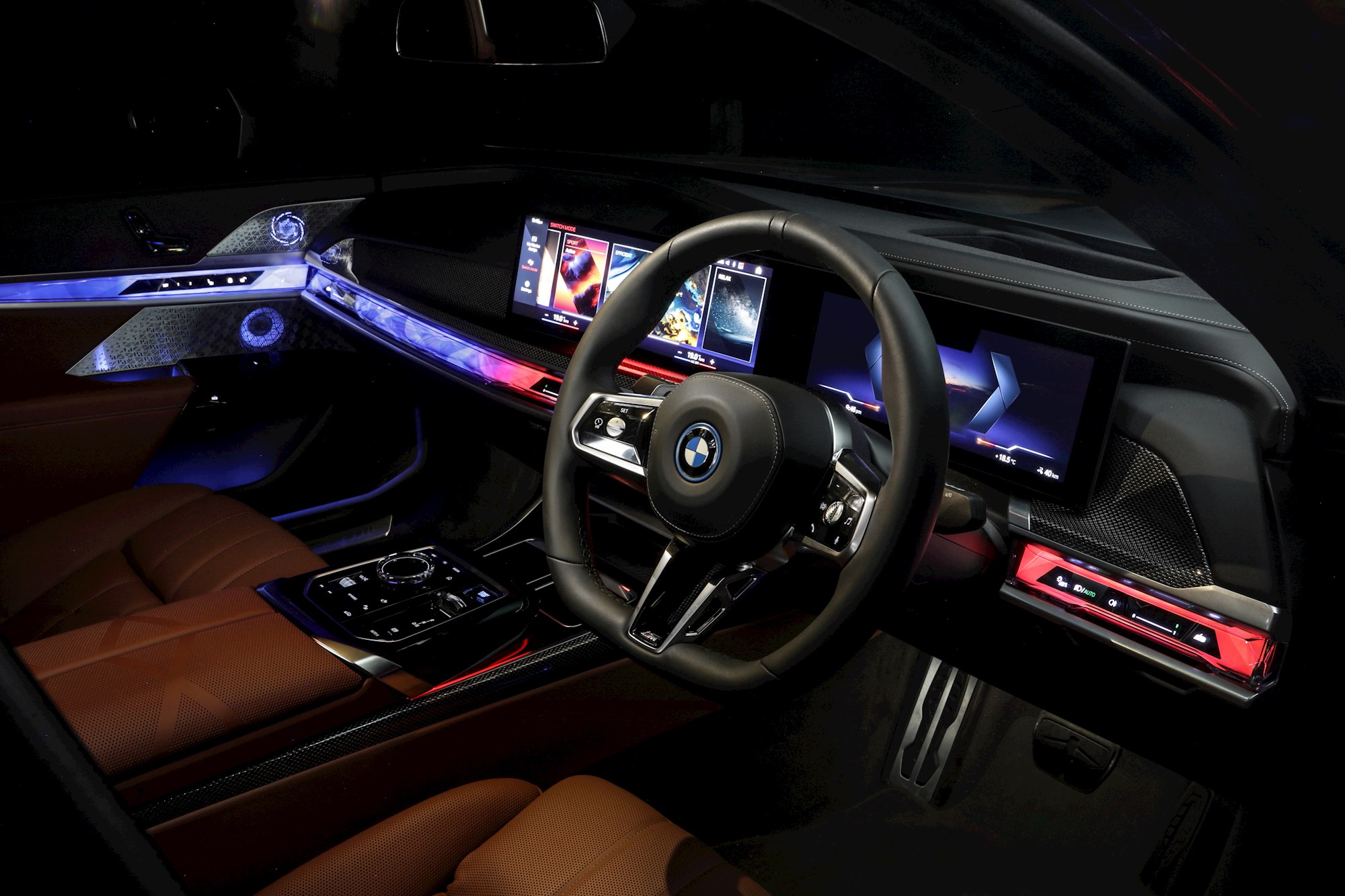
Ride quality is outstanding with dual axle adaptive air suspension covering a lot of the comfort, also allowing adjustable ride-height from +20mm (in Comfort) to -10mm in Sport. There’s also opposing four-wheel steering with an active rack to help tight parking moves, which switches to parallel steering above 60km/h. Though naturally more about luxury than lap times, 7 Series also has inherent driving dynamics from BMW’s DNA – of course the active electric roll bars that improve stabilisation also help.
READ MORE: BMW iX is 2022 AA DRIVEN NZ LUXURY CAR OF THE YEAR
Another Rolls Royce inspiration is the option of two-tone paint: there are four set combinations for each model, so forget the teal on tangerine mix, but they are quite tasteful and do mimic sibling brand RR quite well.
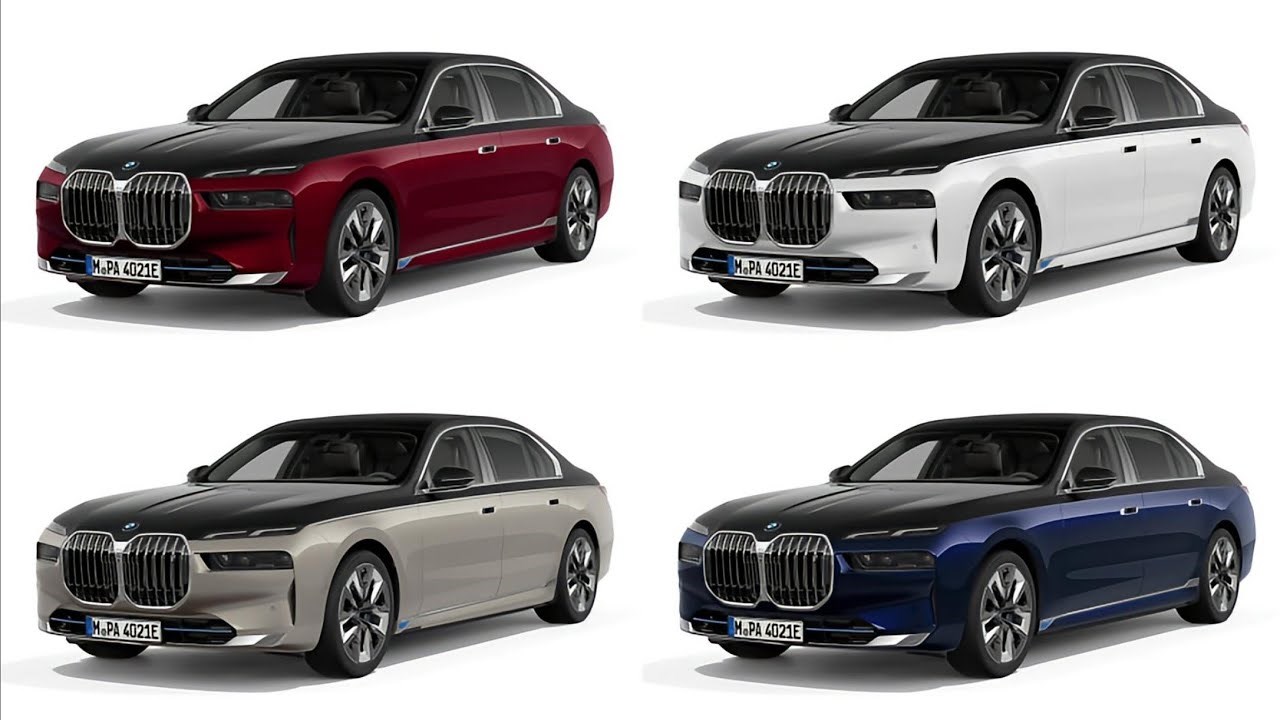
On the charging front, the i7’s large 106kWh battery is good for over 600km claimed, though our range gauge was showing 550km at 100 per cent. It can DC charge up to 195kW, equating to around 170km for 10 mins charge, or 10-80 per cent in 34 minutes at a hyper charger. The i7 also includes a home BMW wallbox, plus an AC charge cable, and three-pin trickle charger.
It’s be a big few months for BMW, with the Z4 update, launch of the new M2, M3 Touring and XM and two others all due in March and April. Probably just coincidence, that makes seven.
READ MORE: BMW i4 M50 first drive
READ MORE: Mercedes-Benz EQS 4Matic
READ MORE: Climate activists vandalise Andy Warhol BMW Art Car
TEARDOWN
BMW i7 xDrive 60
ENGINE: Dual electric motors BEV, 106kWh battery, AWD
POWER: 400kW/745Nm
0-100KM/H: 4.7 secs
ECONOMY: 625km range (WLTP)
WEIGHT: 2640kg
PRICE: $276,900



















